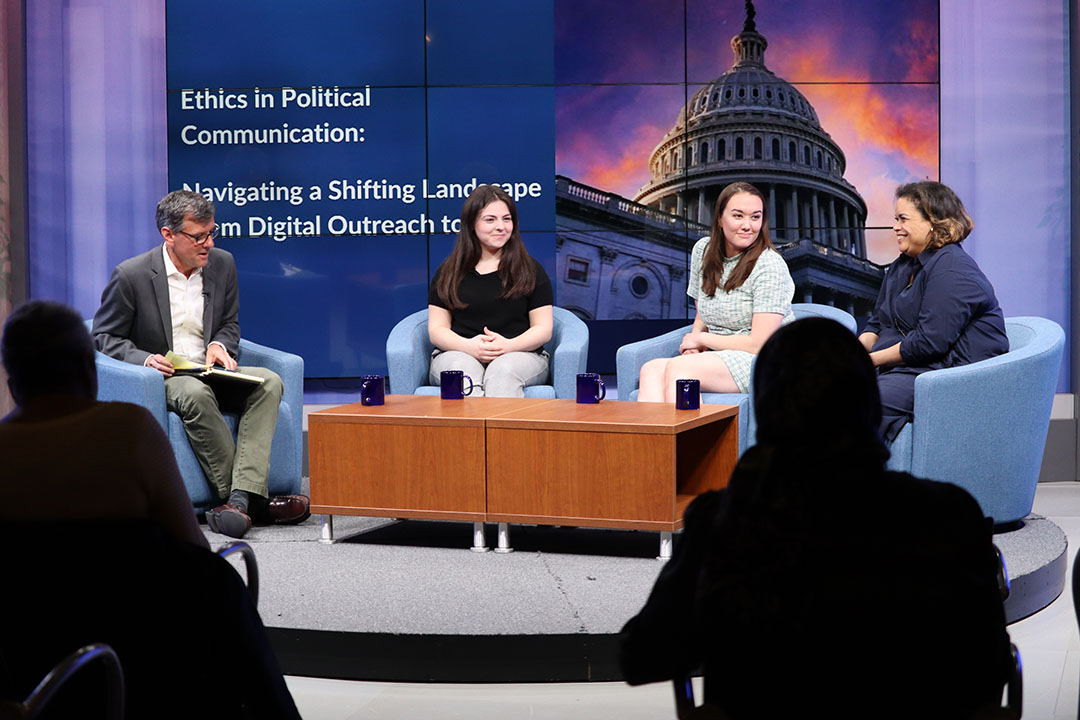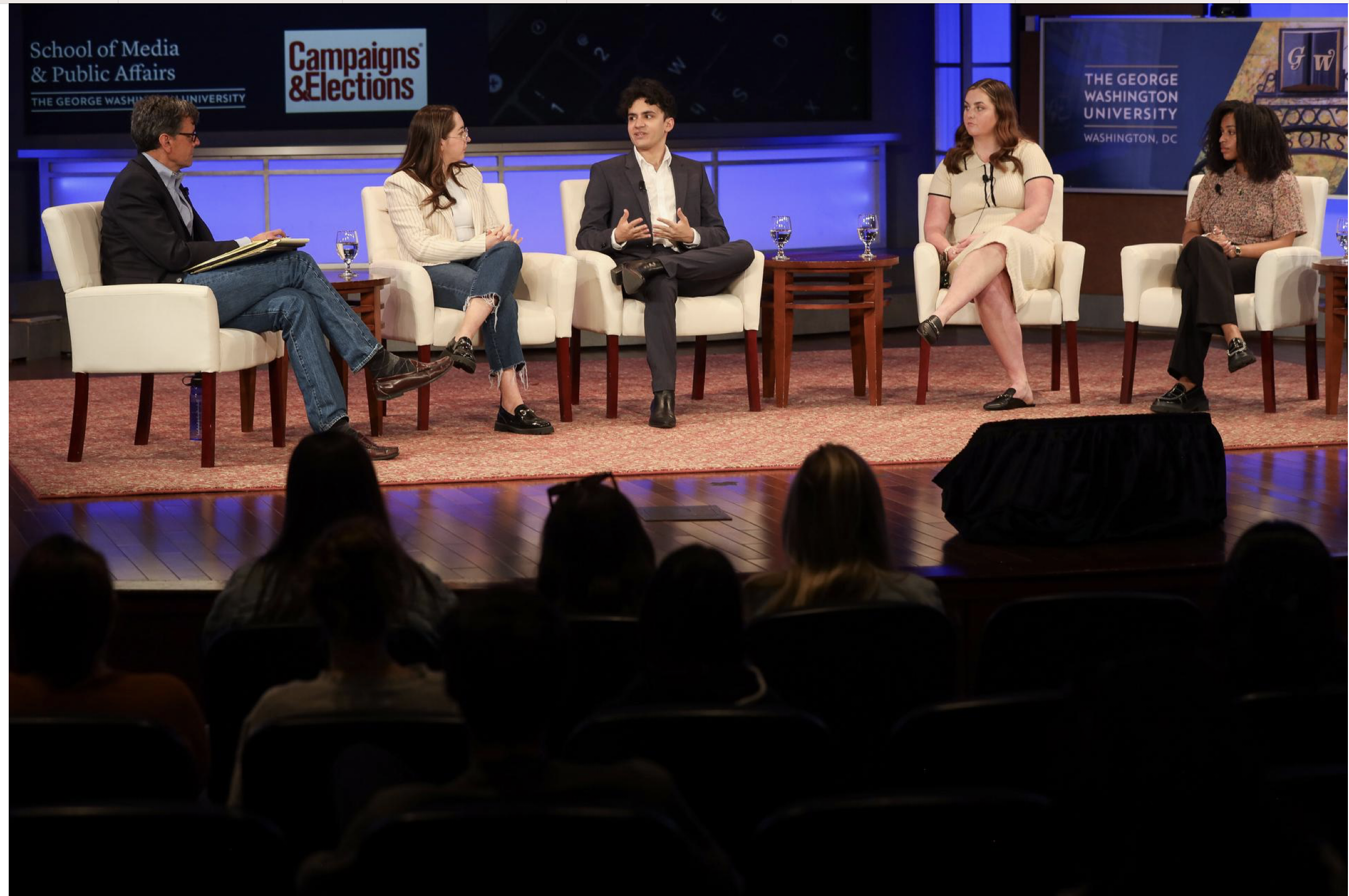As the country gets closer to Election Day, Americans, especially those in battleground states, are being bombarded by political advertisements. But will that be enough to get voters to the polls?
A panel discussion, “High Stakes, Higher Turnout? What Will Bring Voters to the Polls in ‘24 and How Campaigns Are Working to Get Them There,” hosted by the George Washington University School of Media and Public Affairs (SMPA), explored how campaigns are going past traditional advertising to reach voters.
Moderated by Peter Loge, the director of SMPA, the panel was the first of a three-part conversation series with SMPA, in partnership with Campaigns & Elections. The panelists were Tad Rupp, a partner at Targeted Victory, Mariel Sáez, the executive vice president at SKDK, and Camille Murray, a junior studying political communication at GW.
“All of us are drowning in email, direct mail, texts, over-the-air ads and every other way of reaching voters,” Loge said. “The question is how do you turn all of that noise, all that attention into somebody actually casting a ballot and showing up on Election Day.”
Rupp spoke about how campaigning has had to change with the times. Using the 2004 presidential elections as an example, Rupp said micro-targeting and opening local victory offices were important developments in campaign strategy.
In 2024, the variety of content needed to engage different audiences across multiple channels has expanded, Rupp said.
Saez said what’s different now is technology and shifts in how content is consumed, which have allowed for a variety ways to reach and engage various communities. She pointed out that more than 200 digital content creators were given credentials to attend the 2024 Democratic National Convention (DNC).
“It was unheard of before. But it brought so many more people into the fold in terms of reaching them where they are and engaging them,” Saez said.
Murray said this year will be her first opportunity to vote in a presidential election and seeing how campaigns have evolved to reach young voters has been exciting.
Loge asked the panel what would encourage young people to cast their votes in November.
“I think seeing what this election means, what's at stake for them as young people, as young Black people, as young people of color, as young undocumented people, as young LGBTQ, they see what's at stake with those rights in voting. And I think that's going to come and push them out to vote in this election,” Murray said.
Loge raised the point that new tools enable campaigns to identify specific voter groups and asked about the impact of micro-targeting in the current presidential race.
Rupp said campaigns are no longer using one-size-fits-all broadcast messages but refining their message and tailoring it to reach different pockets of voters in more authentic ways.
Responding to how campaigns can cut through the political noise and connect with voters on a smaller, more personal level, Saez spoke about meeting voters where they are through multiple touchpoints.
She gave the example of a young voter who opens up TikTok to see a content creator they’ve been following for years post a video doing a “get ready with me” for the DNC and then later that day, they might turn on their TV and see their favorite celebrity endorsing a candidate.
“So it’s about thinking holistically about how we are reaching voters,” Saez said, explaining how the goal is to create a more inclusive and strategic approach by leveraging both micro-influencers and big-name celebrities across various media platforms.
Loge asked whether traditional campaigning techniques like having campaign workers going door-to-door in neighborhoods are still effective.
Murray said canvassing is an important tool to try to reach people who aren’t necessarily keeping up with election-related news.
Rupp said there is no one-size-fits-all approach and it will take a mix of using new technology and tried and true techniques like canvassing to reach and incentivize voters to show up on Election Day.
“It is a numbers game. But there is no secret sauce. It may be a celebrity, or it may be a neighbor that grabs you at the right time,” Rupp said.





